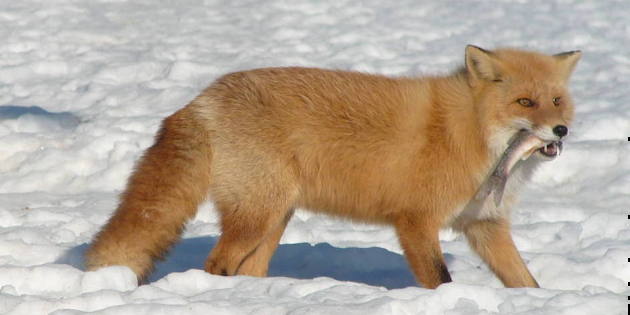Yamanashi Prefecture
-
Oohora-no-mizuba Spring, Lake Yamanaka
-
Yanagisawa Pass
-
Mt Fuji
Oohora-no-mizuba Spring, Lake Yamanaka
This hard-to-find location is well known among Japanese bird photographers and it is a popular place in the summer to see flycatchers and warblers coming in to a small spring to bathe and drink. The birds appear to be quite used to the cameramen who sit nearby, chatting during quiet times, clicking hundreds of frames when a colourful Blue & White Flycatcher or a Narcissus Flycatcher comes within range.
Species that can be seen at close range include: Japanese Thrush, Blue & White Flycatcher, Narcissus Flycatcher, Eastern Crowned Warbler, several species of tits, Japanese White-eye and sometimes Siberian Blue Robin or Japanese Grosbeak. Early morning and late afternoon are best, especially on hot days, and from mid/late May until late August.
The actual spot is in a large area of weekend homes, and there is a maze of small one-lane roads to navigate. Good luck!
But first, the easy part: Take Route 138 (Hakone ura-kaido) from Hirano (on the south shore of Lake Yamanaka) towards Gotemba in Shizuoka Prefecture.
Now the hard part!
Drive south on Route 138 from Asahigaoka junction (south side of Lake Yamanaka at Hirano) in the direction of Gotemba. On the left hand side, about 500 meters from that junction, there is a coin laundry (sign written in English) on the corner of a narrow one-lane road. Beside the laundry (on the south side) is a small car park for customers. Right on the corner is a white single-storey building with shuttered windows.
In front of the coin laundry, and also on the opposite side of the road, there are bus stop marker signs for Fujikyu Bus. The name of the bus stop is Fujikyu Bessochi Kanrijimsho-mae. At this very small junction/bus stop there is a poorly marked zebra crossing across Route 138.
Here (on the left side of Route 138, north side of the narrow road) there is also a large orange mirror for drivers next to a sign (in katakana Diamond, then in English Yamanaka-ko). Opposite, on the right side of Route 138, is a narrow one-lane track, so this junction is actually a 4-way one.
Turn left off Route 138 into the one-lane road and then drive straight down this road for about 300 meters.
As you drive this short distance, you will pass (in order of location) 1) a small four-way junction, 2) on the left side just beyond this junction half a dozen small metal objects (shaped like short "mushrooms") which look like ventilators for a tank (something is buried in the ground under the short grass) 3) on the right side a large house built back above the road with a kind of high rock-garden built up beside the road 4) a small single-lane road to the left and 5) a log cabin on the left with playground equipment (a child's slide and a set of 3 swings) right at the corner of 6) a 5-way junction.
At this junction there is a large pinkish/buffish-coloured stone and a dark brown wooden sign, which has Lake Yamanaka written in English and Naka-ku 7-chome in Chinese characters on the large board. Above is a narrower board with two spotlights attached. The left column of the sign is dark brown wood and the right side column and base are constructed from attractive pale-coloured stone.
This sign sits between two narrow lanes that lead off to the right. Take the first of these two (soon after turning right there will be a log cabin on the left side), and the road gently curves to the left. Drive for about 350/400 meters and you will come to a T-junction (narrow lane off to the left). Just by this junction there is a small garbage collection point (a small mesh container with a peaked roof). On the right side of the road, right at this junction, is a short (10 meter) low white metal crash barrier on which there are some strips of black and yellow hazard-warning tape.
Another 50 meters or so past this junction is a small stone shrine on the right side under the trees (a boxlike shrine with one side open and a deity inside, with coin offerings at its feet). There are also several stone stele, with Chinese characters etched into them, with a rice-straw rope tied around each one.
Behind this shrine you will find some steps leading down to the small valley and the spring is just a few meters away on the right side. On a hot day there are likely to be several cars parked near the shrine, and the photographers cannot be missed as they sit around gossiping! The spring is actually located directly under the white crash barrier.
Location of general area: http://diddlefinger.com/?ll=35.398058,138.879075&z=17&t=m
Yanagisawa Pass (Yanagisawa-toge), Yamanashi Prefecture
For visiting birdwatchers from Europe, Siberian Blue Robin is high on the list of to-see species. Although a fairly common visitor to Japan to mid-level elevations during the summer months (breeding on the lower slopes of Mount Fuji and also around Karuizawa), and at migration watchpoints during both spring and autumn, actually seeing one -- as opposed to hearing them sing -- is quite a different matter!
Soon after arriving iin May, males sing high in the treetops and, even though the leaves are often not fully open, they can be hard to pin down.
However, there are two places where sightings can be fairly easily made: One is the photographers' stakeout at Oohora-no-mizuba near Lake Yamanaka, and another place is Yanagisawa-toge, north of Koshu City/Enzan, also in Yamanashi Prefecture.
To get to the latter site, it is accessible by bus from Enzan Station. Chuo line trains to/from Matsumoto/Takao (and sometimes Shinjuku or Tokyo) stop here. The problem is that the bus only runs on weekends and national holidays, and then there are only two per day (at 0830 and again at 1240/returning at 1010/1540).
A timetable, in Japanese, is at http://yamanashikotsu.co.jp/noriai/timetable03.htm
The easiest way is if you have access to a vehicle. Take Route 411 (Ome-kaido/Daibosatsu Line), which links Enzan to Tabayama, in Oku-tama. About 10 km from Enzan you will find the Yanagisawa-toge (pass) parking area. Behind the restaurant/shop there is a car park and public toilets. About 100 metres further along the road to the north of the parking area is a turning to the left, which has a barrier across the entrance. This may or may not be closed.
Just 40 or 50 metres in from the junction, on the left hand side of the road, is a concrete dr ainage ditch in a very narrow opening, with a narrow pathway into the trees. Follow this and you will come to a stream with an open area of mud/gravel. On the right side, as you descend, the stream flows into this area, and this is where the photographers stand. Beyond a "barrier" -- a white plastic rope -- there are a few logs on the mud, and this is where the birds fly to when they come in to drink or bathe.
http://diddlefinger.com/?ll=35.775952,138.802525&z=18&t=m
Birds that can be expected here include: flycatchers, warblers, Siberian Blue Robin, Japanese Robin, and probably Brown-headed Thrush and Japanese Thrush.
About 400 m further up the road, on a corner on the left hand side (this road is full of bends!), there are a couple of moss-covered logs right beside the road, between dwarf bamboo that grows on either side. On the opposite side of the road, a low concrete wall (above a narrow gully with a big black plastic water pipe) serves as a seat, and from here the photographers wait for their subjects to appear on the logs, which they sometimes bait with mealworms.
Siberian Blue Robin and Japanese Robin are the target species here, but other species may include: Red-billed Leiothrix, Japanese Bush Warbler and Grey Bunting.
Approximate location: http://diddlefinger.com/?ll=35.774276,138.801076&z=17&t=m
At the weekend during the late spring and early summer, several photograhers are likely to be staked out at both these sites, so look for cars parked at the side of the road by the junction for the first site, and if you drive/walk to the second site, if any photographers are there, you will see them at the side of the road.
Also in the immediate area of this site are the forest and hiking trails to Daibosatsu peak and Kurogawa/Keikanzan peaks -- both a couple of hours or so away via the well-used trails.
There are a couple of trail entrances on the right side of Yanagisaw a-toge (one on the opposite side of the road 25 metres north of the parking area/gift shop).
Inside the forest there are some trail maps, so it is quite easy to get around, but a detailed hiking map is needed if you plan to hike to Daibosatsu or Keikanzan. Some of the trees in the forest have been labeled, with Japanese, Latin and occasionally English names written on.
During the spring to autumn, Asiatic Black Bear are out and about, so a degree of caution is needed, especially in the late spring and summer when sows and cubs could be encountered. Japanese (Sika) Deer are also around.
Birds in the forest include: Copper Pheasant, White-backed Woodpecker, Great Spotted Woodpecker, Japanese Green Woodpecker, Japanese Pygmy Woodpecker, Japanese Thrush, Brown-headed Thrush, Siberian Blue Robin, Red-flanked Bluetail, Blue & White Flycatcher, Narcissus Flycatcher, Olive-backed Pipit, Eastern Crowned Warbler, Japanese Leaf (Arctic) Warbler, Sakhalin Leaf Warbler, Grey Bunting and Meadow Bunting.
Mount Fuji 富士山
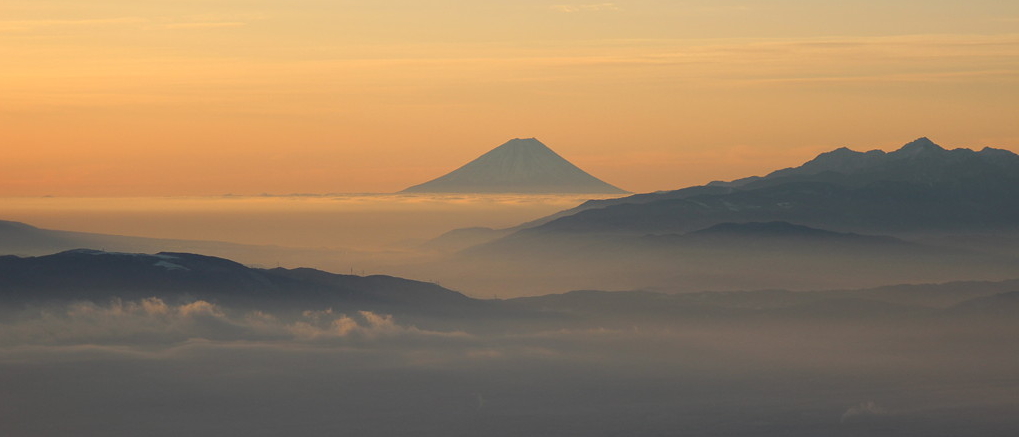
Mt Fuji (Fuji-san), along with cherry blossoms and sushi, is one of Japan's icons. This active stratovolcano, which last erupted in the early 17th century, is one of Japan's three sanreizan (holy mountains). It is located about 100 km southwest of Tokyo.
The nation's most photographed peak really needs no introduction as it is featured in virtually all promotional materials for the country.
The 3,776-metre-high mountain – Japan's highest – straddles the borders of Yamanashi and Shizuoka prefectures. During the "official" hiking season, which lasts from early July until early September, it is a hugely popular tourist attraction for both domestic and international tourists alike, and up to 4,000 people per day climb the UNESCO WHS-inscribed peak.
(Due to the ongoing COVID-19 pandemic, all hiking routes are closed for the 2020 season).
Although the upper half of the mountain is for the most part barren and bird-free, the dense forests on the lower slopes are well worth visiting, especially between mid-April and July, once the summer breeding birds have returned.
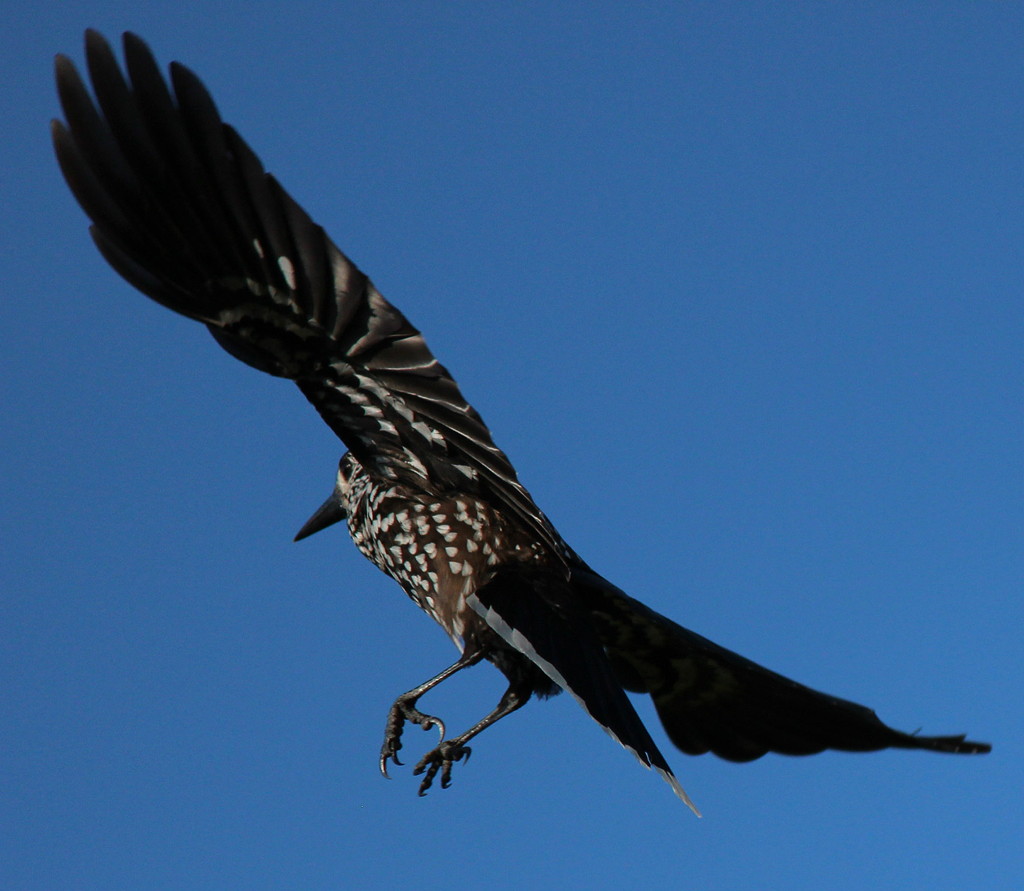 The main birding area is at Fuji Gogome (Fifth Stage), which also happens to be the starting point for the most popular trail to the summit. There are a few parking areas between the toll booth and the Okuniwa/Fifth Stage area, and it is worth stopping in any of them to check what is around.
The main birding area is at Fuji Gogome (Fifth Stage), which also happens to be the starting point for the most popular trail to the summit. There are a few parking areas between the toll booth and the Okuniwa/Fifth Stage area, and it is worth stopping in any of them to check what is around.
In the early morning in May or early June Siberian Blue Robin, Olive-backed Pipit and Brown-headed Thrush can sometimes be seen perching on top of nearby trees, which they use as song posts, while Japanese Robin can be heard from inside the forest. You may be lucky and find a Siberian Thrush.
A word of warning: the forests are very dense and as there are no trails there is the possibility of becoming lost. Make sure to have a compass with you or learn how to use the compass function on your smartphone.
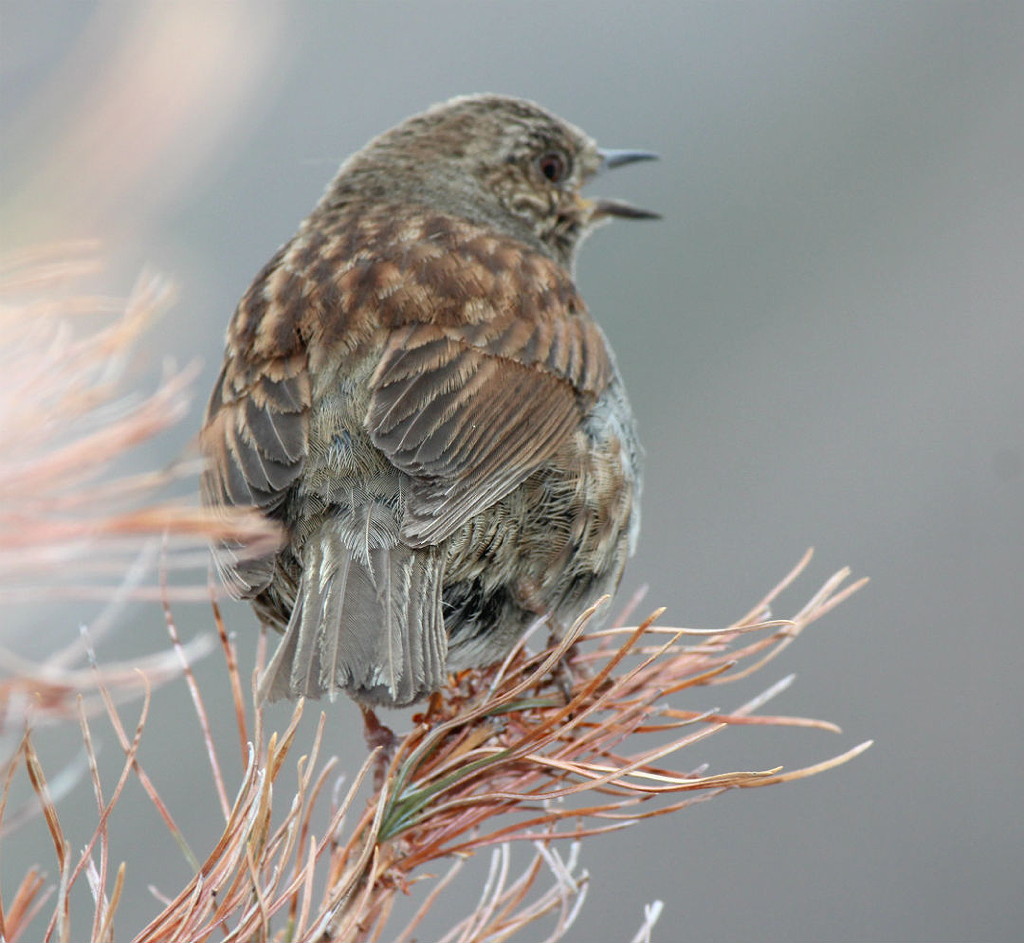 Although generally the area is crowded in summer (especially so at weekends and on public holidays), if you move away from the immediate vicinity of the car parks and gift shops, some quality high-altitude birds can be seen. These include both Alpine Accentor and Japanese Accentor, Red-flanked Bluetail, Japanese Leaf Warbler and Spotted Nutcracker. Overhead, Pacific Swift is about the only species to be seen, but during migration seasons check any swift flocks for White-throated Needletail.
Although generally the area is crowded in summer (especially so at weekends and on public holidays), if you move away from the immediate vicinity of the car parks and gift shops, some quality high-altitude birds can be seen. These include both Alpine Accentor and Japanese Accentor, Red-flanked Bluetail, Japanese Leaf Warbler and Spotted Nutcracker. Overhead, Pacific Swift is about the only species to be seen, but during migration seasons check any swift flocks for White-throated Needletail.
One place well worth visiting is Okuniwa, about 2 km before the end of the road at the Fifth Stage. There is a car park and toilet facilities at the entrance. From there, it is about a 100 m walk to a small gift shop and tea house, and at the west end of the building, tucked under the trees, is a little spring and bathing pool for birds.
This is a popular place for photographers during the summer months as during hot weather different species of birds come in to drink and bathe and are not too bothered by the people watching and photographing them just a few metres away.
Some of the species that visit this spot are: Eurasian Bullfinch, Japanese Accentor, Red-flanked Bluetail, Coal Tit, Japanese Bush Warbler and Goldcrest.
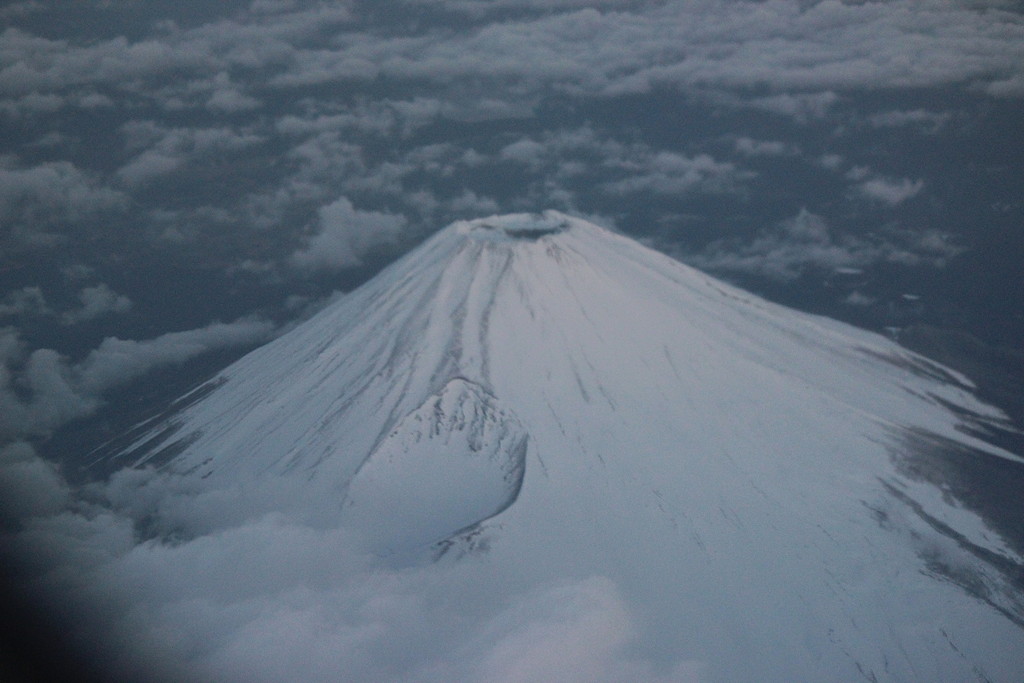 Access:
Access:
During the summer tourist season there are direct buses from Shinjuku Express Bus Terminal in central Tokyo. There are also buses from Osaka, Kyoto, Nagoya and Takayama to the Mount Fuji area.
At certain times, such as weekends or national holidays, a shuttle bus is in operation. Please check with the visitor centre (0666-72-0259) for the latest information.
By train, use the Chuo Line from JR Shinjuku Station as far as Otsuki, and change there to the Fujikyuko Line to Kawaguchiko Station. Change to the local bus to Gogome Fifth Station/Okuniwa.
If using a private vehicle, you will need to drive up the Fuji Subaru Line (Route 707) toll road from Fujiyoshida City. Unfortunately, this road does not open until 0700 and there is no entrance after 1700. All vehicles have to exit from the toll gate by 1800. The toll fee is ¥2,100. The road is open until 10 September.
There are additional roads to the mid-levels: Mount Fuji Skyline (Route 152) on the south side to Fifth Stage Rest House and Fuji Azami Line (Route 150) to Subashiri Trail Fifth Station entrance. Both of these are toll-free.
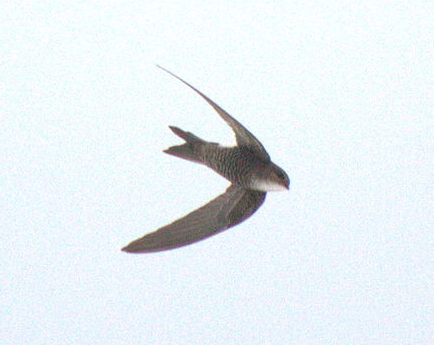 Map information:
Map information:
Fuji Subaru Line toll booth 35.447420, 138.755583
Okuniwa tea house 35.390768, 138.703769
Fifth Stage parking area/Fuji Subaru Line 35.395370, 138.733072
Fifth Stage Rest House/Mount Fuji Skyline 35.337026, 138.733572
Subashiri Trail entrance (Fuji Azami Line) 35.366394, 138.778538
Shuttle bus information: https://www.japan-guide.com/bus/fuji.html
Fujisan World Heritage Centre: https://www.japan-guide.com/e/e6914.html#section_get_there
© 2021 Mark Brazil & Chris Cook
Last updated: 20210925

